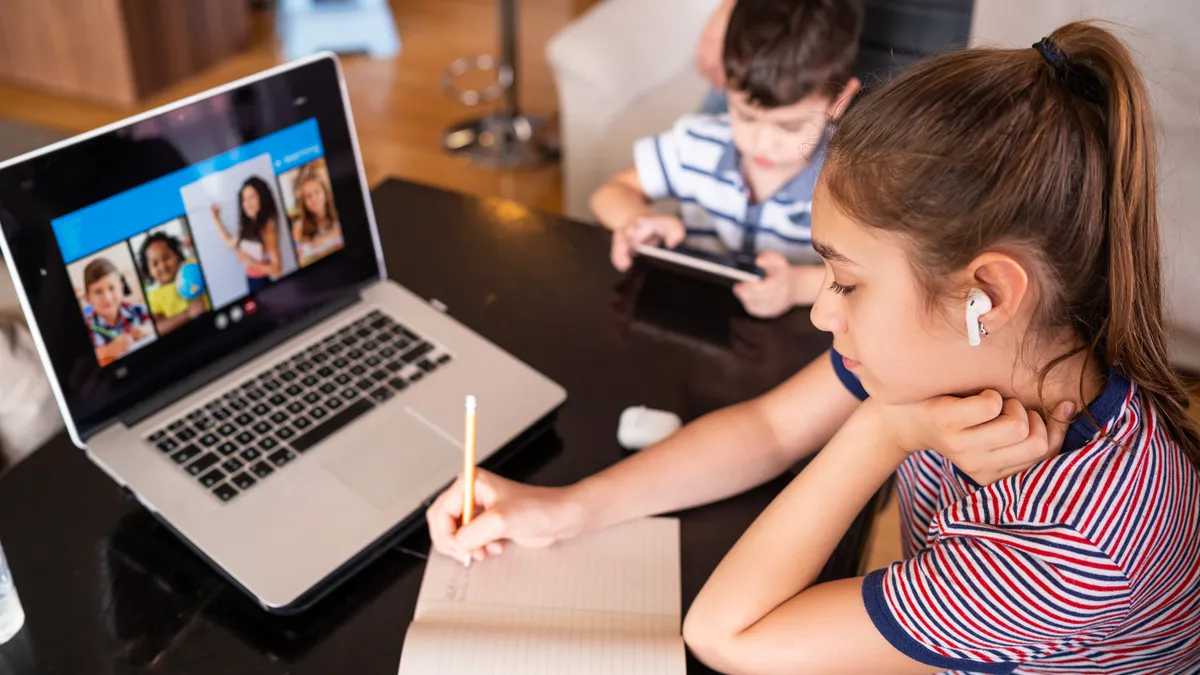Dive Brief:
- An increasing number of school districts are adopting in-person learning pods for lower-income families and vulnerable populations, according to Robin Lake, director for the Center on Reinventing Public Education, who hosted a virtual panel on the trend last week.
- Indianapolis School District, for example, repurposed funds it would have used for in-person learning to get the learning hub sites off the ground before the start of the school year. The district oriented its efforts around special needs students and homeless populations.
- Students who qualify for the services are provided with transportation to the hubs, which are hosted in school buildings, and meals. Every site is staffed with a nurse, social worker and instructional support staff and practices personal protective measures.
Dive Insight:
When the federal government first pressured schools to reopen, emphasizing the role schools play for the social and mental wellbeing of students, Deborah Temkin, the vice president for youth development and education research at Child Trends, said school-facilitated learning bubbles could serve as a "bridge" between in-person and isolated learning for students without the ability to form pods on their own.
But when learning pods first cropped up in light of COVID-19 closures, there was concern the trend would exacerbate already-existing gaps as affluent families leveraged their time and resources to organize them. The Denver Public Schools Board of Education, for example, released a statement in August suggesting learning pods could have "equity implications" and "long-term negative implications for public education and social justice."
Now, some are reimagining the potential of pods as a way to serve the most marginalized students instead. Mind Trust, an Indianapolis equity nonprofit organization, is working with trusted local partners, like churches, to provide learning sites for students.
The organization expects to be able to sustain the program until mid-October, but CEO Brandon Brown, who spoke on the CRPE panel, said federal support will be needed to maintain it in the long term. Another obstacle the organization faced was dealing with local regulations that would make pods illegal, but Brown suggested that schools work with policy leaders to temporarily find workarounds.
For Indiana Public Schools Superintendent Aleesia Johnson, who also took part in CRPE's event, getting the program off the ground included:
- Immense logistical planning, such as overlapping student schedules with the daily flow of the pods.
- Making phone calls to parents.
- Basic software training for on-site staff so they can support teacher instruction, which is still conducted virtually.
- Coordination between site coordinators (often school-facing central office members), the on-site team and the building principal in charge of the space being used.
Other districts are spearheading similar efforts, such as in Tennessee and Colorado. According to YouthToday, YMCAs in at least 45 states are offering virtual learning centers.
Brown said not only are some of these centers providing support during the school day, but they also extend past school hours and provide enrichment activities. This design was made specifically with parents' working hours in mind, which often extend beyond the typical school schedule, he said.













